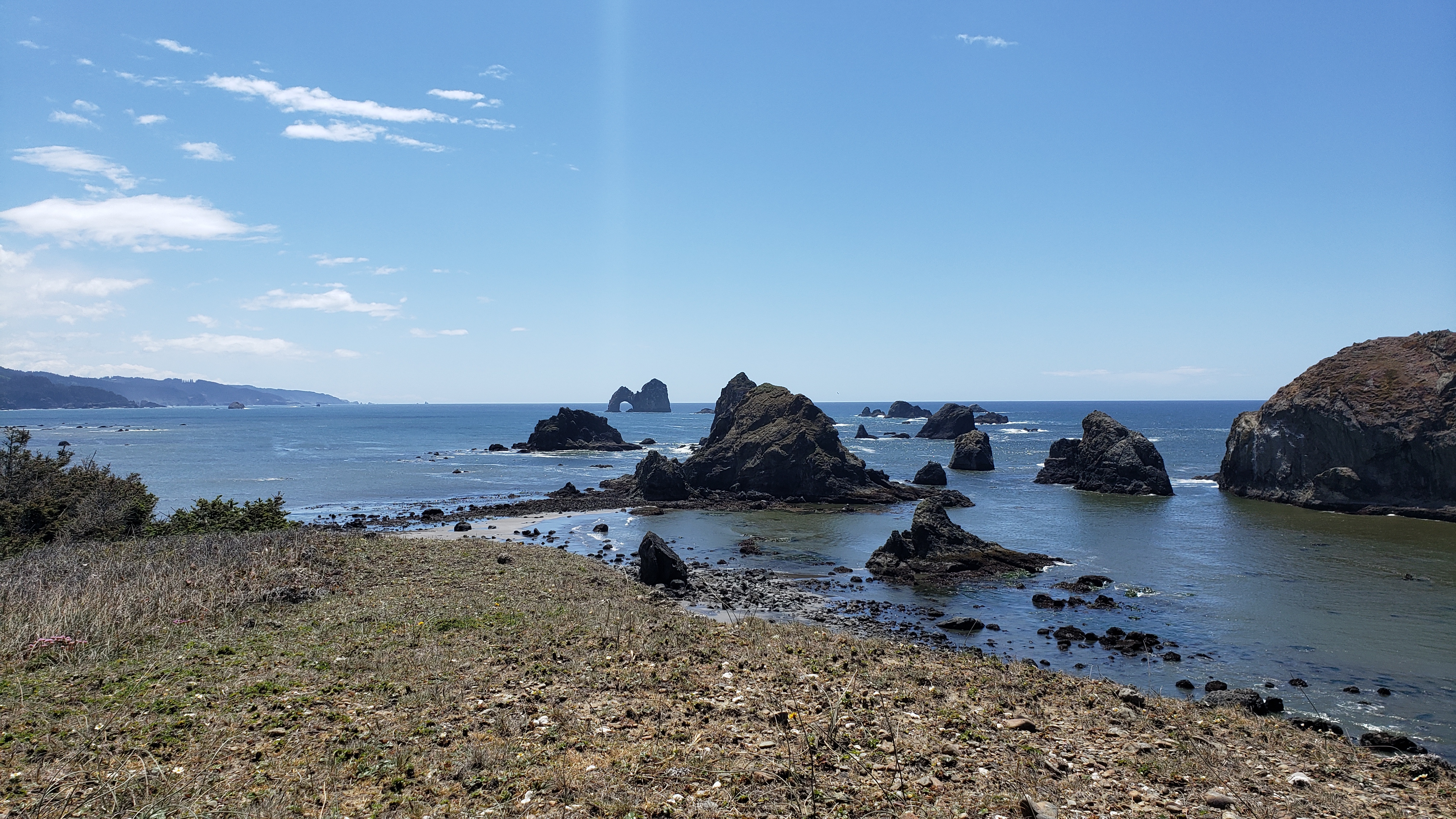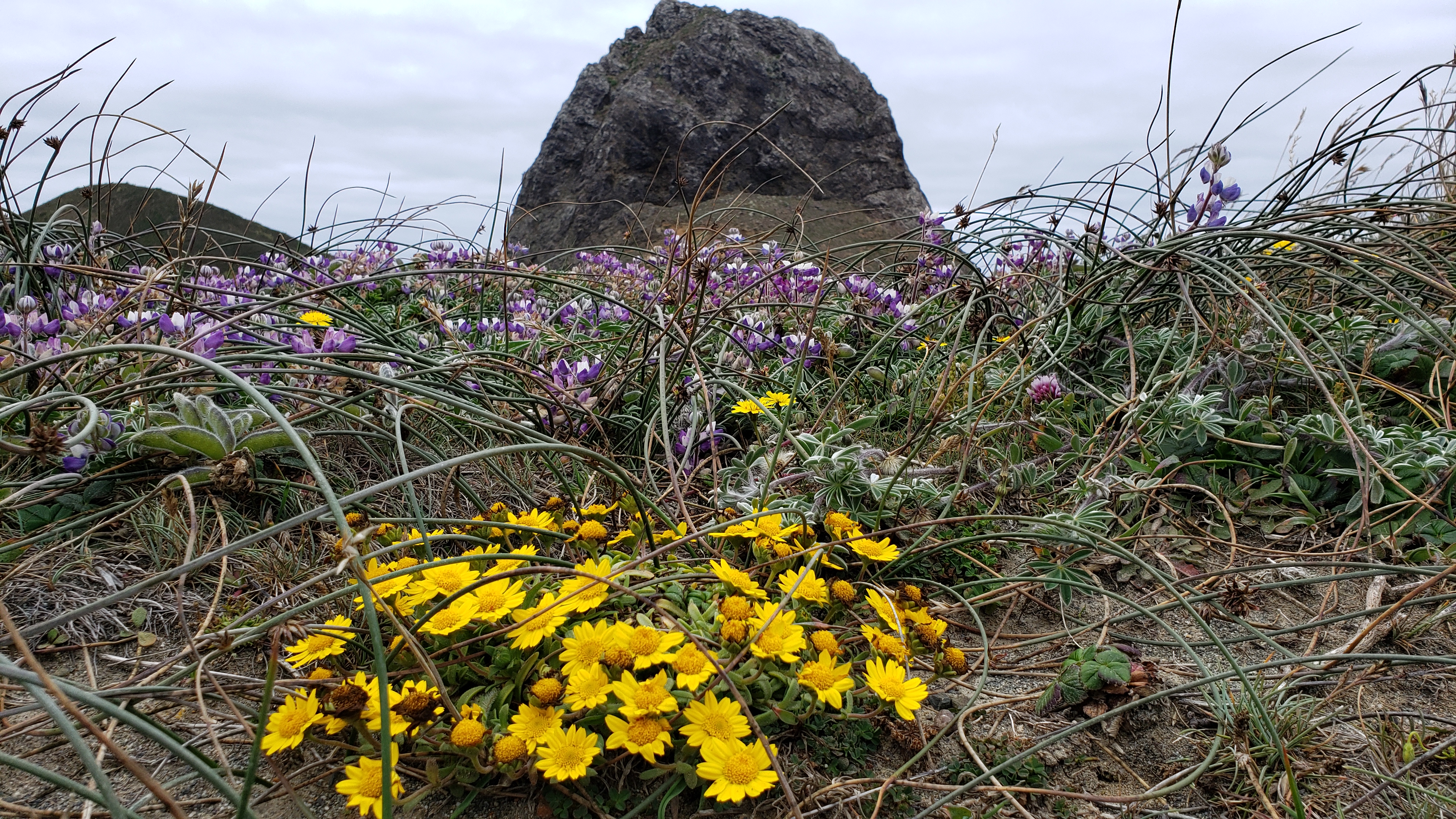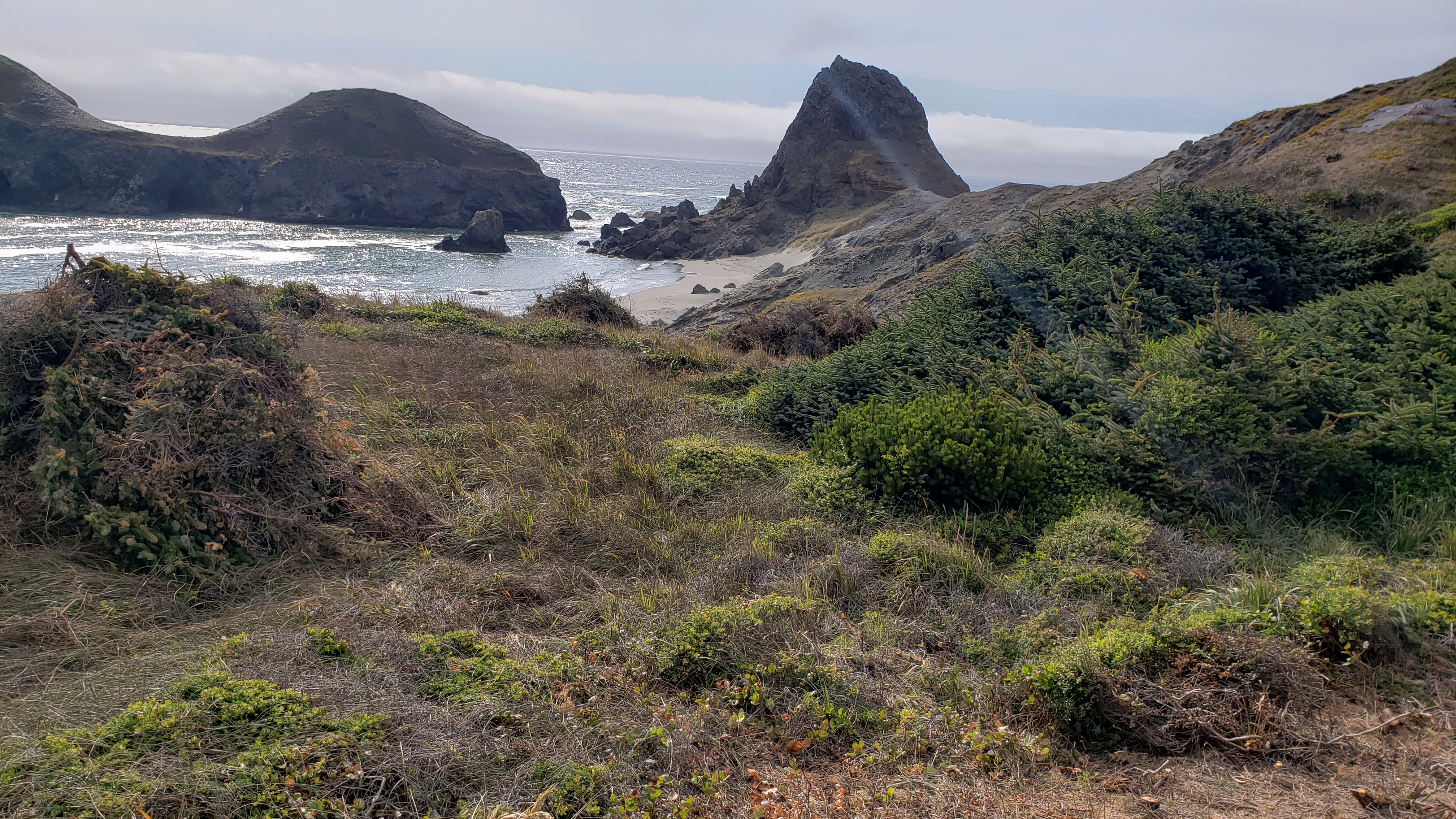
Making Space for Coastal Grasslands
By Julia Fields
October 2021
The Oregon coast is wild and rugged, with powerful erosive forces of wind and rain seasonally buffeting coastal habitats. Many coastal plants adapted to withstand the onslaught with roots that hold fast to soil and prevent erosion, tough or hairy leaves that reduce desiccation, and low statures that hug the ground to hunker out of the wind. Indigenous people used fire to maintain open headlands for visibility and to stimulate food plants. Fire and grazing animals kept the trees and shrubs from dominating and allowed native coastal prairies and grasslands to flourish. Today, coastal prairies are rare habitats threatened by coastal development and the steady expansion of shore pine (Pinus contorta) and spruce (Picea sitchensis) in the absence of regular disturbances. One example of intact coastal prairie can be found at Crook Point in Curry County, Oregon.
The Nature Conservancy purchased Crook Point in 1998, and it became the second mainland unit of the U.S. Fish and Wildlife Service Oregon Islands National Wildlife Refuge in 2000. It was one of the last privately owned undeveloped headlands in Oregon and is now preserved in perpetuity as a refuge for native plants and wildlife. Crook Point hosts a population of large-flowered goldfields (Lasthenia ornduffii), a Curry County endemic species, and protects birds and marine mammals that utilize the near shore islands.
The Institute for Applied Ecology, in partnership with the U.S .Fish and Wildlife Service, is conducting habitat restoration to conserve and expand coastal prairies at Crook Point. This includes removing encroaching conifers and pulling out invasive plants such as yellow bush lupine (Lupinus arboreus) and sea fig (also called iceplant, Carpobrotus chilensis). Once the unwanted plants are removed, we will broadcast and plant native seed and plugs to expand the existing prairie habitat. At Crook Point, common native prairie plants include sand fescue (Festuca ammobia), seaside plantain (Plantago maritima), seaside daisy (Erigeron glaucus), seashore lupine (Lupinus littoralis), coast buckwheat (Eriogonum latifolium), and Brewer’s rush (Juncus breweri). While native seed is becoming more available with projects like the Coastal Native Seed Partnership and the Willamette Valley Native Plant Partnership, plant materials sourced from the southern Oregon coast are still in short supply. To build up a seed inventory for use at Crook Point, IAE staff collected native coastal prairie seed and established seed augmentation fields. The seed will be broadcast in areas disturbed by restoration activities. We can’t wait to see what comes up next spring!
Crook Point is closed to the public to prevent introduction of invasive plants and to provide a refuge for wildlife; however, similar habitats can be viewed at other sites nearby such as Floras Lake State Natural Area, Sister’s Rock State Park, and Port Orford Heads State Park.

Restoration
Research
Education
Get Involved
Contact
Main Office:
4950 SW Hout Street
Corvallis, OR 97333-9598
541-753-3099
[email protected]
Southwest Office:
1202 Parkway Dr. Suite B
Santa Fe, NM 87507
(505) 490-4910
[email protected]
© 2024 Institute for Applied Ecology | Privacy Policy
